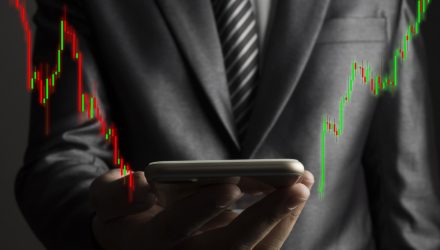Election Day is just a few weeks with away, providing a runway for equity market volatility to increase. Investors can mitigate some of that risk with hedged ETFs, such as the AGFiQ Dynamic Hedged U.S. Equity ETF (USHG).
The AGFiQ Dynamic Hedged U.S. Equity ETF provides exposure to a diversified portfolio of U.S. equities while seeking to provide long-term capital appreciation with lower volatility using embedded downside risk management which seeks to protect capital. The ETF offers exposure to the long-term growth potential of U.S. equities using a multi-factor approach designed in an effort to have lower volatility and better risk-adjusted returns relative to the market through its use of a dynamic hedging model.
USHG offers traditional long exposure to U.S. stocks but uses a multi-factor approach aimed at reducing volatility. Additionally, the fund uses “proprietary sector allocation and risk models are evaluated on a daily basis so the portfolio can be responsive to changing market conditions,” according to the issuer.
Help From a Hedge
While the U.S. presidential election is still three months away, some are already prepping for heightened volatility associated with prolonged political uncertainty, the Wall Street Journal reports.
For instance, some are speculating that President Donald Trump could try to delay the election or disrupt mail-in voting, along with a chance of an unclear result for weeks after polls close.
It doesn’t matter who wins the presidential election come November, investors could be in for a wild ride of volatility. If September’s market swings were akin to an aftershock, then November could bring the big one, according to Wells Fargo Securities’ head of macro strategy Michael Schumacher.
The actively managed USHG operates as a fund-of-funds investment vehicle that invests primarily in sector-based ETFs and other ETFs with a focus on U.S. equity exposure. The managers also employ proprietary, multi-factor quantitative models that use fundamental factors and market risk measurement factors to help establish allocation to primary sectors of the S&P 500 Index.
USHG could better address volatility and risk management. Investors should still keep in mind that we are in the late stages of a normal business cycle and should also be ready for the potential risks that this entails.
Nevertheless, downside risks remain and may be growing as we head deeper into the later stages of an economic cycle, if not well into recession, along with rising global geopolitical and economic risks.
For more alternative investing ideas, visit our Alternatives Channel.
The opinions and forecasts expressed herein are solely those of Tom Lydon, and may not actually come to pass. Information on this site should not be used or construed as an offer to sell, a solicitation of an offer to buy, or a recommendation for any product.








